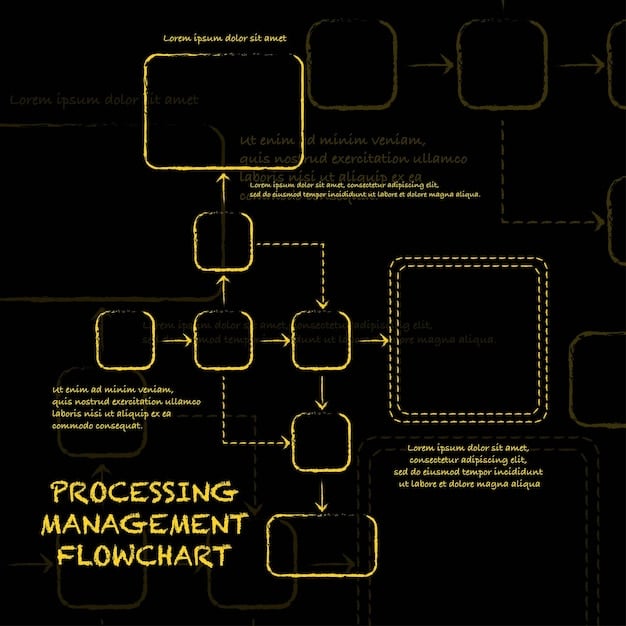US Businesses & SEC Climate Rules: Preparing for 2026

US businesses must proactively prepare for the new SEC Climate Disclosure Rules, effective 2026, by assessing current environmental impacts, improving data collection, developing robust reporting mechanisms, and integrating climate considerations into financial planning to ensure compliance and mitigate risks.
The landscape of corporate responsibility is rapidly evolving, with environmental factors taking center stage in financial reporting. For US businesses, a significant shift is on the horizon: the new SEC Climate Disclosure Rules, set to become effective in 2026. Understanding How Can US Businesses Prepare for the New SEC Climate Disclosure Rules Effective 2026? is no longer a rhetorical question; it’s an urgent operational imperative that demands immediate attention and strategic foresight.
Understanding the SEC Climate Disclosure Rules
The U.S. Securities and Exchange Commission (SEC) has enacted groundbreaking rules requiring public companies to disclose extensive climate-related information in their registration statements and annual reports. These rules aim to provide investors with consistent, comparable, and reliable information to make informed decisions regarding climate-related risks and opportunities.
At its core, the SEC’s initiative reflects a global push towards greater transparency in environmental, social, and governance (ESG) matters. For many businesses, particularly those with a broad operational footprint or significant emissions, these rules represent a substantial increase in reporting obligations. The overarching goal is to standardize climate-related disclosures, moving beyond voluntary frameworks to mandatory, auditable reporting. This shift underscores the SEC’s view that climate risks are material financial risks that warrant public disclosure, akin to traditional financial data.
Key Components of the New Rules
The new rules broadly categorize disclosures into several key areas, each demanding specific data collection and reporting mechanisms. Companies will need to report on their governance of climate-related risks, their strategies for managing these risks, and the impacts of climate-related events and transition activities on their financial statements. Perhaps most notably, the rules introduce requirements for disclosing Scope 1 and Scope 2 greenhouse gas (GHG) emissions, and in some cases, Scope 3 emissions.
- Governance Disclosure: Companies must detail their board’s oversight of climate-related risks and management’s role in assessing and managing such risks. This includes explaining how climate expertise is incorporated at leadership levels.
- Strategy Disclosure: Information on how identified climate-related risks have materially impacted or are reasonably likely to impact the company’s strategy, business model, and outlook is required. This encompasses transition plans, scenario analysis, and internal carbon prices.
- Risk Management Disclosure: Companies need to describe the processes for identifying, assessing, and managing climate-related risks, and how these processes are integrated into the company’s overall risk management system.
The phased implementation, beginning in 2026 for larger acelerated filers, provides a window for preparation. However, the complexity and breadth of the requirements mean that preparation cannot be a last-minute endeavor. It requires a systematic approach to data collection, technological adoption, and internal process re-engineering. Ignoring these rules could expose companies to significant regulatory penalties, reputational damage, and investor scrutiny.
Ultimately, these disclosures are not just about compliance; they are about understanding and mitigating a new class of business risks. Companies that embrace these changes proactively will likely find themselves better positioned to attract capital, manage operational efficiencies, and enhance their brand reputation in an increasingly climate-conscious marketplace.
Assessing Your Current Climate Footprint and Disclosures
Before any meaningful preparation for the SEC’s new climate disclosure rules can begin, US businesses must undertake a comprehensive assessment of their current climate footprint and existing disclosure practices. This foundational step is crucial for identifying gaps, understanding liabilities, and building a roadmap to compliance.
Such an assessment goes beyond merely tallying emissions. It involves a deep dive into operational processes, supply chain intricacies, and even the governance structures that currently oversee environmental matters. Many companies may already be engaged in some form of sustainability reporting, whether through existing voluntary frameworks like the Task Force on Climate-related Financial Disclosures (TCFD) or Global Reporting Initiative (GRI). The key is to evaluate these existing efforts against the stringent and specific requirements outlined by the SEC.
Conducting a Comprehensive GHG Emissions Inventory
A primary component of this assessment is an accurate and auditable greenhouse gas (GHG) emissions inventory. This includes Scope 1 (direct emissions from owned or controlled sources), Scope 2 (indirect emissions from electricity, steam, heating, and cooling purchased for the company’s own use), and potentially Scope 3 emissions (all other indirect emissions that occur in a company’s value chain). While Scope 3 reporting has more caveats under the new rules, understanding its potential materiality for your business is critical.
- Scope 1 & 2 Data Collection: Identify all sources of direct emissions (e.g., combustion in company vehicles, industrial processes) and indirect emissions from energy consumption. Establish robust data collection points and methodologies.
- Scope 3 Assessment: Even if not immediately mandatory for all, assess the relevance of Scope 3 emissions for your sector and business model. This involves engaging with supply chain partners and understanding emissions from purchased goods, transportation, employee commuting, and waste generation.
- Data Verification: Implement mechanisms for internal and external verification of emissions data to ensure accuracy and meet independent assurance requirements stipulated by the SEC.
Beyond emissions, companies need to assess their climate-related risks and opportunities. This includes physical risks (e.g., extreme weather events, rising sea levels) and transition risks (e.g., policy changes, technological advancements, market shifts). Understanding how these risks could impact financial performance is integral to the disclosure requirements. This often involves performing climate scenario analysis to stress-test business models under different future climate pathways. This forward-looking analytical component is essential for robust reporting and strategic planning.
Finally, review your current internal controls and reporting systems. Are they adequate to capture the granular data required by the SEC? Do you have clear lines of responsibility for climate data? Is there a process for ensuring data integrity and consistency? An honest assessment of these areas will highlight system deficiencies and areas requiring immediate investment. This comprehensive initial assessment lays the groundwork for all subsequent preparatory actions, ensuring that efforts are targeted and efficient in achieving compliance by the 2026 deadline.

Developing Robust Data Collection Systems and Processes
The success of complying with the new SEC climate disclosure rules hinges critically on a company’s ability to collect and manage vast amounts of climate-related data with accuracy, consistency, and audibility. Developing robust data collection systems is not merely a technical exercise; it’s a strategic imperative that underpins the credibility and reliability of future disclosures.
Many US businesses may find their existing data infrastructure ill-equipped to handle the granularity and breadth of information required. Traditional financial reporting systems, while sophisticated, were not designed to capture environmental metrics such as greenhouse gas emissions, water usage, or the financial impact of climate-related events. Therefore, a significant investment in system upgrades, new software solutions, and personnel training will likely be necessary.
Implementing Technology for Enhanced Tracking
Leveraging technology is paramount for efficient and accurate data collection. specialized software platforms designed for ESG and sustainability reporting can streamline the aggregation of diverse data points from across the organization and its value chain. These tools often feature automated data feeds, calculation engines for emissions, and dashboards for real-time monitoring.
- ESG Reporting Software: Explore solutions that can centralize data, calculate emissions (Scope 1, 2, and potentially 3), and generate reports compliant with various frameworks, including the SEC’s. Look for features like audit trails and data validation capabilities.
- IoT and Sensors: For operational data, consider implementing Internet of Things (IoT) devices and sensors to capture real-time energy consumption, waste generation, and other environmental parameters directly from machinery and facilities.
- Blockchain for Supply Chain Transparency: While nascent, some companies are exploring blockchain technology to enhance the transparency and immutability of data collected from complex supply chains, particularly relevant for Scope 3 emissions.
Beyond technology, establishing clear processes and assigning responsibilities are essential. This involves defining who is responsible for collecting specific data points, how often data is collected, and the protocols for validating data accuracy. cross-functional teams, likely involving finance, operations, legal, and sustainability departments, will need to collaborate closely to ensure data consistency and integrity. Training employees on the importance of data accuracy and the new reporting requirements is also a critical, often overlooked, aspect of this process.
Furthermore, businesses should consider developing a strong internal control framework specifically for climate-related data. This mirrors the controls applied to financial data, ensuring that information is reliable and can withstand scrutiny from auditors and regulators. The goal is to integrate climate data collection seamlessly into existing business operations, making it a routine part of business intelligence rather than a separate, burdensome task. By investing in robust data infrastructure and processes now, companies can transform a compliance challenge into an opportunity for greater operational efficiency and strategic insight.
Integrating Climate Risk into Governance and Financial Reporting
The new SEC climate disclosure rules fundamentally shift climate risk from solely an environmental concern to a core financial and governance issue. For US businesses, this mandates a deep integration of climate considerations into existing corporate governance structures and financial reporting frameworks. This integration is not merely about disclosure; it’s about embedding climate awareness into the strategic decision-making processes at every level of the organization.
Effective governance of climate-related risks begins at the top, with the board of directors. The SEC rules require disclosure of the board’s oversight of climate-related risks and management’s role in assessing and managing these risks. This often necessitates the board acquiring or enhancing expertise in climate science, policy, and their financial implications. Some companies may consider appointing a dedicated climate committee or assigning specific climate oversight to an existing committee.
Strengthening Board Oversight and Management Accountability
Boards must actively engage in understanding climate risks and opportunities, ensuring that these factors are considered in strategic planning, capital allocation, and risk management. This involves more than just receiving reports; it means challenging assumptions, setting clear targets, and holding management accountable for climate-related performance. Management teams, in turn, need to establish processes for identifying, assessing, and managing climate risks on an ongoing basis. This includes:
- Defining Roles and Responsibilities: Clearly delineate roles across departments (e.g., sustainability, finance, legal, operations) for managing climate data and risks.
- Setting Internal Controls: Establish robust internal controls over the climate-related information that will be disclosed in financial reports. This ensures the information is accurate, complete, and verifiable.
- Integrating into Enterprise Risk Management (ERM): Climate risks should not be treated as a separate category but integrated into the company’s broader ERM framework, allowing for a holistic view of potential threats and opportunities.
From a financial reporting perspective, the rules require disclosure of the financial impacts of climate-related events (such as severe weather) and transition activities (such as carbon taxes or investment in new technologies). This demands a robust accounting of climate-related costs and impacts. Companies will need to adjust their accounting practices to track and disclose these specific financial implications. This could include impacts on asset impairment, revenue-generating activities, or supply chain costs. Furthermore, the SEC is interested in how climate-related targets and goals are incorporated into executive compensation, signaling an expectation for performance linkages.
The integration of climate risk into governance and financial reporting signifies a fundamental shift from treating climate as an isolated environmental issue to recognizing it as a systemic financial risk. Businesses that successfully embed these considerations into their core operations will not only achieve compliance but also enhance their resilience, attract sustainability-focused investors, and gain a competitive edge in a rapidly changing global economy.
Leveraging Existing Frameworks and Best Practices
While the new SEC Climate Disclosure Rules introduce mandatory requirements, they are not entirely reinventing the wheel. Many US businesses are already familiar with, or even actively participating in, various voluntary climate and sustainability reporting frameworks. Leveraging these existing frameworks and adopting recognized best practices can significantly streamline the preparation process for SEC compliance.
Frameworks such as the Task Force on Climate-related Financial Disclosures (TCFD), the Global Reporting Initiative (GRI), and the Sustainability Accounting Standards Board (SASB) have paved the way for climate-related disclosures. The SEC’s rules draw heavily from principles established by TCFD, particularly in areas of governance, strategy, risk management, and metrics and targets. Therefore, companies that have already aligned their reporting with TCFD recommendations will find themselves at a considerable advantage.
Aligning with TCFD and Other Standards
TCFD, in particular, provides a well-structured framework for disclosing climate-related financial risks and opportunities. Its recommendations cover the same four core pillars as the SEC rules, making it a natural starting point for compliance efforts. Many of the qualitative and quantitative disclosures required by the SEC can be directly informed by a TCFD-aligned reporting approach.
- TCFD Implementation: Review your current TCFD alignment. If not yet implemented, use TCFD as a guide to structure your internal climate risk assessments, governance frameworks, and strategic planning.
- SASB Standards: Consider relevant SASB standards for your industry. SASB provides industry-specific disclosure topics and metrics that are financially material, offering a detailed roadmap for specific climate-related data points. While not explicitly mandated by the SEC, SASB can inform the materiality assessments for climate-related impacts.
- GRI Standards: GRI provides a comprehensive set of non-financial reporting standards. While broader than just climate, elements of GRI reporting can contribute to a holistic understanding of environmental performance and operational data that may be relevant to SEC disclosures.
Beyond formal frameworks, adopting best practices in data management, internal controls, and assurance is crucial. This includes maintaining detailed documentation of data collection methodologies, ensuring data integrity through internal audits, and engaging independent third-party assurance providers for key climate metrics. The rigor applied to financial audits should now extend to climate-related disclosures to meet the SEC’s expectations of reliability and verifiability.
Furthermore, engaging with industry peers and specialized consultants can provide valuable insights and benchmarks for best practices. Learning from early adopters and those businesses already navigating complex environmental reporting can save time and resources. By strategically leveraging existing frameworks and embracing best practices, US businesses can approach the SEC compliance challenge more efficiently, transforming it from a mere regulatory burden into an opportunity for demonstrating leadership and enhancing long-term value.
Engaging Stakeholders and Building Internal Capacity
Preparing for the SEC’s new climate disclosure rules is not a solo endeavor for any single department; it requires significant cross-functional collaboration and the engagement of diverse stakeholders, both internal and external. Building internal capacity and fostering a shared understanding of the regulatory changes are paramount for a successful and sustainable compliance strategy for US businesses.
Internally, the complexity of climate disclosures demands seamless cooperation between departments that traditionally might not interact closely on financial reporting. Finance, legal, operations, sustainability, risk management, and even human resources will need to contribute data, expertise, and strategic input. Establishing a dedicated working group or steering committee with representatives from these key areas can facilitate communication, define responsibilities, and ensure a coordinated approach.
Cross-Functional Collaboration and Training
Effective collaboration means breaking down departmental silos and creating clear channels for data flow and decision-making. This often involves developing new internal processes and protocols for collecting, verifying, and reporting climate-related information. A crucial element of building internal capacity is comprehensive training for relevant personnel.
- Employee Training Programs: Educate employees across all relevant departments on the SEC’s new rules, the importance of accurate data collection, and their specific roles in the disclosure process. This includes understanding what climate data is, how it should be captured, and why it is material.
- Skill Development: Invest in upskilling finance and accounting teams in climate accounting principles and methodologies. Similarly, sustainability and operations teams may need training in financial materiality and reporting standards.
- Designated Climate Experts: Consider bringing in or developing internal expertise in climate science, carbon accounting, and ESG reporting to guide the process and ensure informed decision-making.
External stakeholders also play a vital role. This includes engaging with investors, who are increasingly demanding transparent climate information; supply chain partners, particularly for Scope 3 emissions data; and auditors, who will scrutinize the veracity of disclosed information. Proactive engagement with these groups can help anticipate questions, manage expectations, and build trust in the disclosed information.
For instance, clear communication with investors about your preparation efforts and commitment to transparency can build confidence. Collaborating with key suppliers to gather necessary Scope 3 data can involve developing shared data collection protocols or even joint initiatives to reduce emissions across the value chain. Finally, early engagement with your external auditors is crucial to understand their expectations for assurance and to integrate audit readiness into your data collection and reporting processes from the outset. By investing in internal capacity building and fostering robust stakeholder engagement, US businesses can transform the challenging compliance journey into an opportunity for enhanced organizational resilience and stronger external relationships.
Strategic Opportunities Arising from Compliance
While preparing for the new SEC climate disclosure rules may initially appear as a compliance burden for US businesses, it also presents significant strategic opportunities. Beyond merely meeting regulatory mandates, proactive engagement with these rules can unlock new avenues for value creation, competitive advantage, and long-term business resilience.
One of the most immediate benefits is enhanced investor relations. With growing institutional investor focus on ESG performance, companies that provide clear, comprehensive, and verified climate disclosures will likely attract more capital from sustainability-focused funds and investors. This can lead to lower cost of capital, increased stock valuation, and a wider investor base, positioning the company favorably in the marketplace.
Building Resilience and Driving Innovation
The process of identifying and assessing climate risks and opportunities—a core requirement of the SEC rules—forces companies to gain a deeper understanding of their vulnerabilities and potential areas for innovation. This can lead to more resilient business models capable of withstanding future climate impacts and regulatory changes.
- Operational Efficiency: Detailed emissions tracking can reveal inefficiencies in energy consumption, waste management, or supply chain logistics. Addressing these can lead to significant cost savings and improved operational performance.
- Product and Service Innovation: Understanding climate impacts can inspire the development of new, climate-friendly products and services that meet evolving consumer demands and regulatory landscapes, opening up new market opportunities.
- Enhanced Brand Reputation: Transparent and credible climate disclosures can significantly boost a company’s reputation among consumers, employees, and the broader public. This can improve brand loyalty, aid in talent acquisition and retention, and build trust.
Moreover, integrating climate considerations into financial planning and risk management frameworks can lead to better long-term strategic decision-making. Companies will be better equipped to identify and capitalize on opportunities related to the transition to a low-carbon economy, such as investment in renewable energy, sustainable technologies, or resilient infrastructure. This forward-looking approach ensures that climate risk is managed proactively, rather than reactively, safeguarding future profitability.
Finally, robust climate disclosures can facilitate better engagement with supply chain partners. The need for Scope 3 data, even if not universally mandatory, compels companies to collaborate more closely with their suppliers on emissions reduction, fostering a more sustainable and resilient value chain. This collaborative effort can lead to shared innovation, improved supplier relationships, and a strengthened collective response to climate challenges. By reframing compliance as a strategic enabler, US businesses can transform regulatory requirements into a powerful catalyst for sustainable growth and a stronger competitive position.
| Key Area | Brief Description |
|---|---|
| 📊 Data Collection | Implement robust systems for accurate Scope 1, 2, and 3 GHG emissions tracking. |
| 🏛️ Governance Integration | Embed climate risk oversight into board and management responsibilities. |
| ⚖️ Compliance Strategy | Leverage TCFD and existing frameworks to streamline disclosure efforts. |
| 📈 Strategic Opportunities | Identify new efficiencies and market advantages through climate initiatives. |
Frequently Asked Questions About SEC Climate Disclosure Rules
The SEC Climate Disclosure Rules require public companies in the U.S. to disclose climate-related information in their registration statements and annual reports. This includes details on governance, strategy, risk management, and metrics, aiming to provide investors with consistent and reliable data on climate risks and opportunities integral to financial decision-making.
The new rules are set to become effective in phases, with larger accelerated filers beginning in fiscal year 2026 for their 2025 financial statements. Other filers will have later effective dates. This phased approach provides companies with a window to implement necessary changes to their data collection and reporting systems.
Companies must disclose Scope 1 (direct) and Scope 2 (indirect from purchased energy) greenhouse gas (GHG) emissions. Scope 3 (value chain) emissions disclosure is required if material or if the company has set a Scope 3 emissions target. These metrics must also be subject to independent assurance.
Integrating climate risk into governance involves the board of directors overseeing climate-related risks and management’s role in assessing and managing them. This may involve assigning climate oversight to board committees, establishing clear responsibilities for climate data across departments, and integrating climate considerations into enterprise risk management frameworks.
Beyond compliance, strategic benefits include enhanced investor relations, attracting sustainability-focused capital, improving operational efficiencies through detailed emissions tracking, driving innovation in products and services, and strengthening brand reputation. Proactive compliance can transform a regulatory challenge into a competitive advantage and foster long-term business resilience.
Conclusion
The new SEC Climate Disclosure Rules, effective in 2026, mark a pivotal moment for US businesses, elevating climate considerations to a core aspect of financial reporting and corporate strategy. Preparing proactively involves a multi-faceted approach, from assessing current climate footprints and implementing robust data collection systems to integrating climate risk into governance and leveraging existing best practices. By embracing these changes, businesses can not only ensure compliance but also unlock significant strategic opportunities, fostering greater resilience, attracting investment, and enhancing their competitive standing in an increasingly climate-conscious economy.





